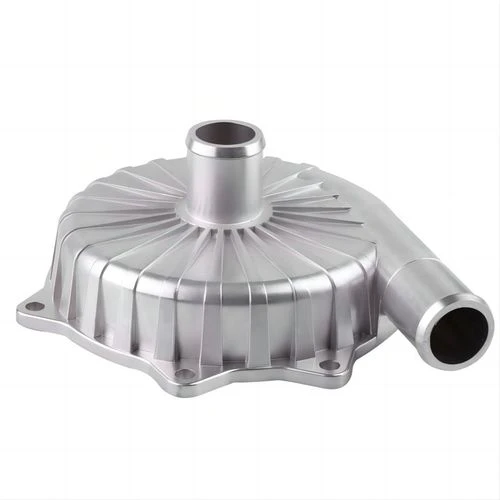Custom Metal Stamping Solutions for OEM Applications and Innovative Manufacturing Processes
Understanding OEM Metal Stamping An Essential Process in Modern Manufacturing
OEM (Original Equipment Manufacturer) metal stamping is a critical process in modern manufacturing that enables the production of precise, high-quality metal parts used in a variety of applications. This technique involves shaping metal sheets into desired forms using specialized stamping machines, which can cut, bend, and form metals with remarkable accuracy and speed. As industries continue to evolve, understanding the intricacies of OEM metal stamping has become increasingly important for manufacturers looking to stay competitive.
The Basics of Metal Stamping
Metal stamping is a process that encompasses several techniques, including blanking, piercing, bending, and forming. The metal forming process typically begins with sheet metal, which is fed into a stamping press. The pressing of the metal sheets is achieved using a die, which is a specialized tool designed to shape the metal into the desired part configuration. This method is widely used due to its ability to produce parts that maintain tight tolerances while ensuring consistency across large production runs.
Key Advantages of OEM Metal Stamping
1. Precision and Consistency One of the most significant advantages of OEM metal stamping is the precision it offers. The use of automated machinery ensures that each part is manufactured according to the same specifications, leading to high levels of consistency. This is particularly important in industries like automotive, aerospace, and electronics, where even minor discrepancies can lead to malfunctions or safety issues.
2. Cost-Effectiveness While initial setup costs for metal stamping can be high due to the customization of dies and machinery, the long-term benefits and cost savings are substantial. Once the initial tooling has been made, the marginal cost of producing additional parts decreases significantly, making it an ideal process for large-scale production runs.
3. Material Versatility OEM metal stamping can be applied to a wide range of materials, including various types of steel, aluminum, brass, and even plastics. This versatility allows manufacturers to select materials best suited for their specific applications, whether they are looking for lightweight solutions or materials with enhanced durability.
4. Efficiency The speed at which metal stamping can produce parts is unmatched compared to traditional machining methods. Stamping presses can operate at high speeds, producing thousands of pieces per hour. This efficiency directly translates to reduced lead times and quicker turnaround for manufacturers.
oem metal stamping

Applications of OEM Metal Stamping
The applications of OEM metal stamping span across several industries. In automotive manufacturing, for instance, metal stamping is used to create components such as brackets, chassis parts, and body panels. Similarly, in the electronics sector, it is employed to fabricate housings and connectors critical for the functionality of various devices.
Moreover, OEM metal stamping is integral to the construction industry, where it is used for producing framing and structural components. Medical devices also benefit from metal stamping, as it allows for the creation of precise parts that meet stringent regulatory standards.
Innovation and Future Trends
As industries become more technologically advanced, so too does metal stamping. The integration of automation, robotics, and advanced software in the manufacturing process is on the rise. Smart manufacturing technologies, including the Internet of Things (IoT), are being leveraged to enhance production efficiency and quality control. These innovations are leading to more adaptive manufacturing environments where real-time data can inform machine operations, reducing downtime and improving output.
Additionally, sustainability has become a focal point in manufacturing, leading to the exploration of eco-friendly materials and processes. Innovations in metal stamping are also contributing to waste reduction by optimizing the layout of components on metal sheets to minimize scrap.
Conclusion
OEM metal stamping is an essential process in modern manufacturing that offers numerous benefits, including precision, cost-effectiveness, and versatility. As industries continue to demand high-quality components, the importance of understanding and utilizing advanced metal stamping techniques will only grow. With the ongoing advancements in technology and a focus on sustainability, the future of OEM metal stamping looks promising, paving the way for more efficient and environmentally friendly manufacturing solutions. As manufacturers leverage these innovations, they will be better equipped to meet the challenges and opportunities of an ever-evolving marketplace.
-
OEM Sand Cast Pump Valve Fittings - Baoding Hairun | Precision Engineering, CustomizableNewsJul.30,2025
-
OEM Sand Cast Pump Valve Fittings - Baoding Hairun Machinery And Equipment Trading Co., Ltd.NewsJul.30,2025
-
OEM Sand Cast Pump Valve Fittings - Baoding Hairun Machinery And Equipment Trading Co., Ltd.NewsJul.30,2025
-
OEM Sand Cast Pump Valve Fittings - Baoding Hairun Machinery|Precision Engineering&Fluid ControlNewsJul.30,2025
-
OEM Sand Cast Pump Valve Fittings - Baoding Hairun Machinery And Equipment Trading Co., Ltd.NewsJul.30,2025
-
OEM Sand Cast Pump Valve Fittings-Baoding Hairun Machinery And Equipment Trading Co., Ltd.NewsJul.30,2025















